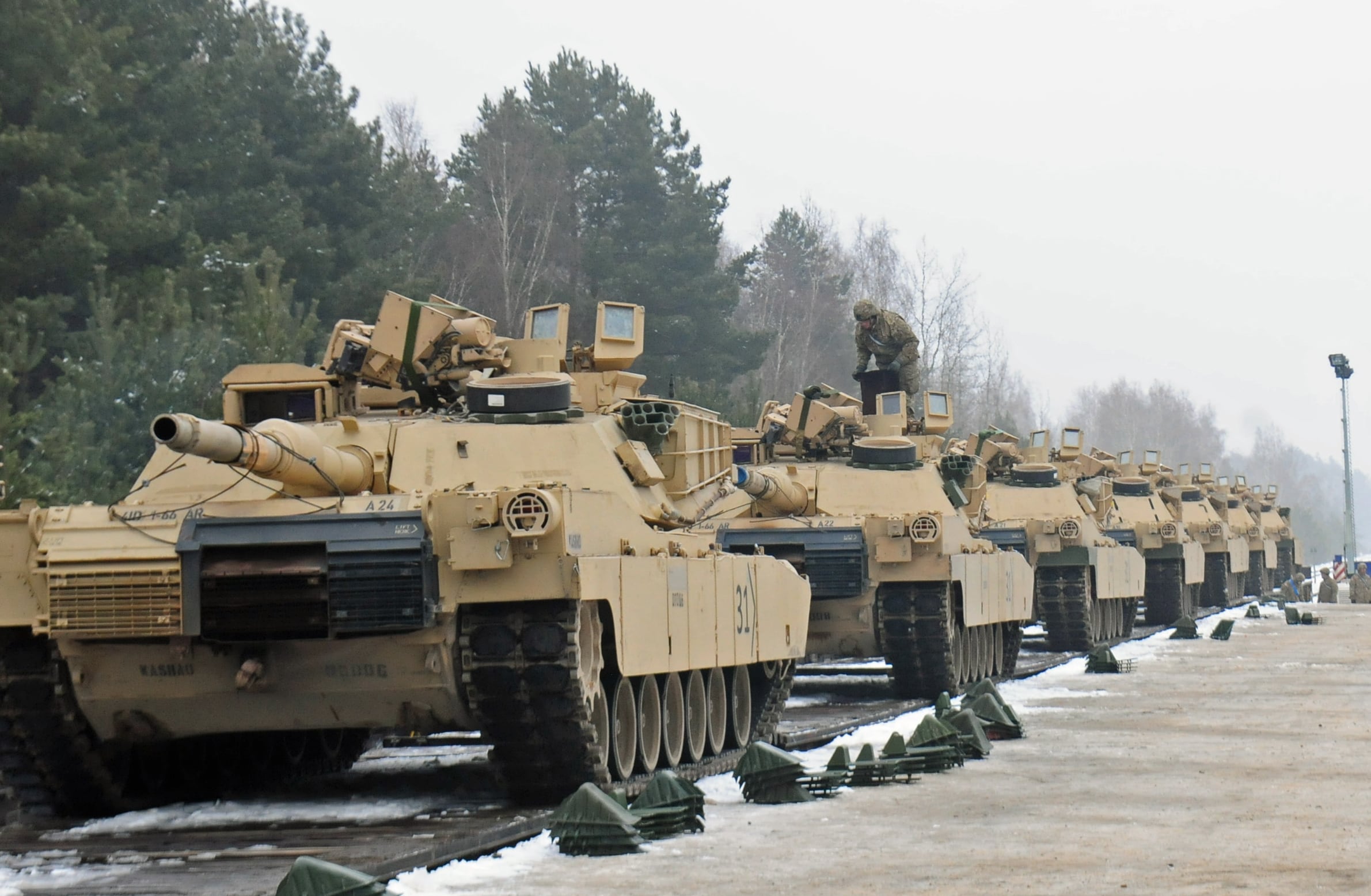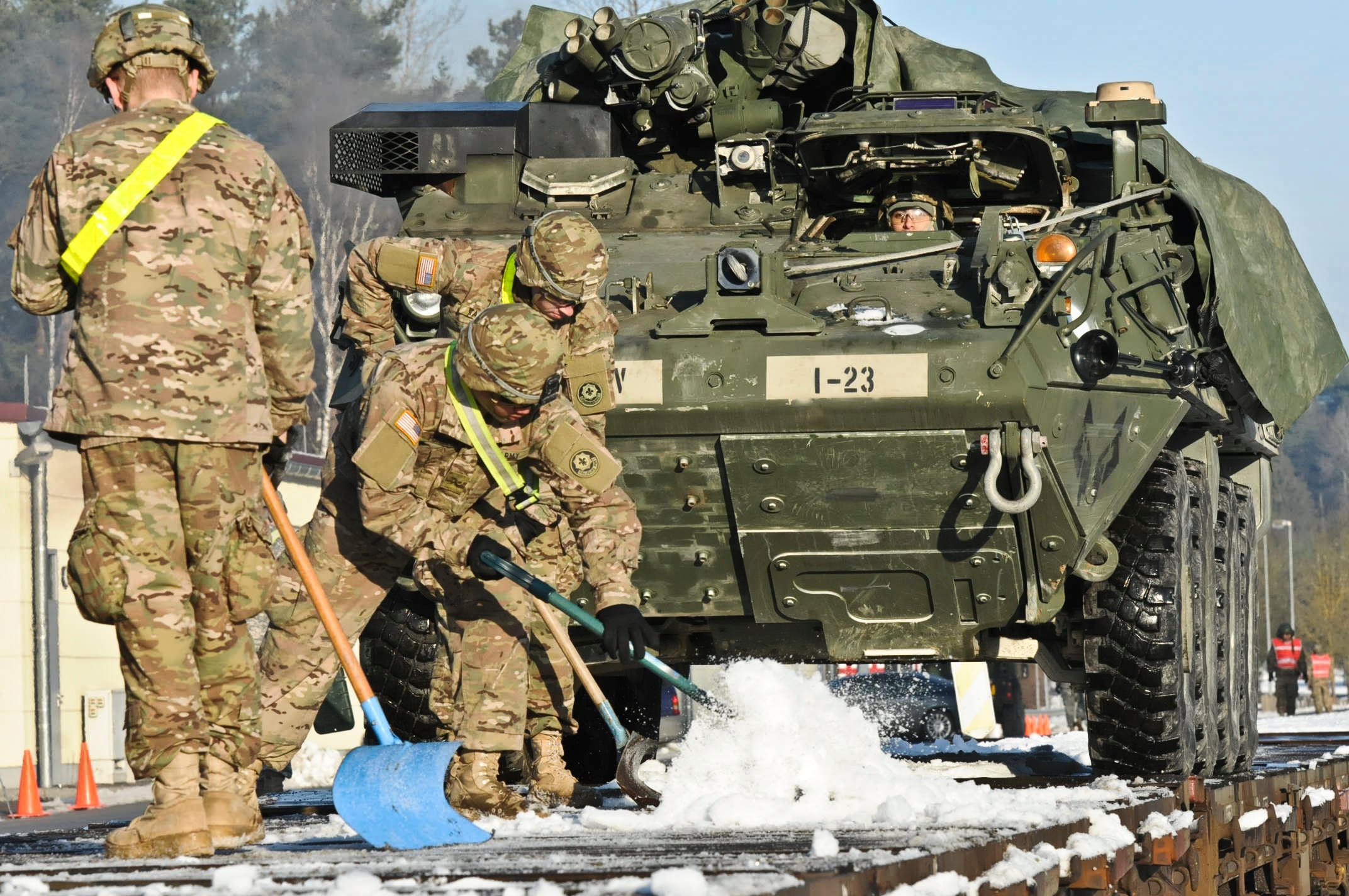Almost as soon as Defense Secretary Mark Esper announced over the summer his plan to move about 12,000 troops out of Germany, a bipartisan group of lawmakers stepped in.
An amendment to the 2021 National Defense Authorization Act could put a hold on the repositioning of forces, but that’s if the plan survives beyond October at all.
“I do believe that if there’s a change in the administration, that this will not happen,” Rep. Ruben Gallego, D-Ariz., told Military Times on Oct. 15 during a press call.
From the beginning, the plan was mired by politics.
President Donald Trump had been threatening Germany for years, questioning what more than 40,000 permanent troops were doing in that country.
In fact, minutes after Esper made a rare Pentagon briefing room appearance to unveil the plan on July 29, Trump insinuated to reporters outside the White House that Germany had it coming.
“Germany is not paying their bills,” he said. “They’re delinquent. It’s simple.”
He was referring to a goal NATO’s member nations set for themselves, to be contributing 2 percent of their gross domestic product by 2024. A handful of countries have met that benchmark ― including Bulgaria, Romania, Greece and Poland ― but Germany is among the majority of countries who haven’t.
“They owe NATO billions and they know it,” Trump told reporters a month earlier. “Why should we be doing what we’re doing if they don’t pay?”
American troops have been stationed in Germany since the end of World War II, for an evolving set of reasons. The physical defense of Germany is not at the top of that list. Since World War II, most of that presence has existed to deter the Soviet Union from attacking or invading its neighbors.
U.S. bases have also provided a lily pad for troops deploying to the Middle East and Africa, as well as a crucial battlefield trauma center at Landstuhl, where thousands of wounded troops have had their life-threatening injuries tended to.
More recently, as Russia has increased its own military activity along its western border, American troops have been training and exercising with local forces from the Balkans to the Baltics, lest Soviet Union history repeat itself.
Esper’s plan acknowledged this current reality, offering that though thousands of troops would be returning stateside from Germany, they would “begin continuous rotations farther east in the Black Sea region, giving us a more enduring presence to enhance deterrence and reassure allies along NATO’s southeastern flank.”
The plan involves moving 11,900 troops total of out Germany. About 5,600 would move to other parts of Europe, like Belgium and Italy. That number also includes 2,500 Air Force personnel who will stay at RAF Mildenhall, England, rather than complete a long-planned transfer to Germany.
Another 6,400, including the 2nd Cavalry Regiment, would head back to the States and become part of a rotational force that would deploy to Eastern Europe.
But critics have asked the Pentagon where that 12,000 number came from, and whether ideas like moving the U.S. European Command and U.S. Africa Command headquarters to Belgium are just to make the math work.
“I don’t think this plan was particularly well thought out and I worry about a number of aspects of its implementation,” Rep. Adam Smith, D-Wash., HASC’s chairman, said during a hearing Sept. 30.
As an insurance policy, Gallego and his fellow House Armed Services Committee member, Rep. Don Bacon, R-Neb., added an amendment to the House’s version of the 2021 National Defense Authorization Act, which would block the Pentagon from reducing troop levels in Germany.
“Part of what our military does is build those alliances and makes sure we don’t have to actually use the military,” Smith said during a mark-up of the bill. "All of those things should be thought about before we announce we’re going to yank 10,000 troops out of Germany. By the way, the president has not yet been clear on what he’s doing.”
The amendment passed 49-7.
“The president may have his feelings, but this conversation also involves Congress, and Congress has a very different perspective when it comes to NATO,” Gallego said. “I did not want this to happen quietly in the night.”
Making moves?
Esper told reporters during his July briefing that some units would be ready to start moving out of Germany in a “matter of weeks,” but by all accounts, everyone has stayed put.
Two Pentagon officials who testified before HASC on Sept. 30 could not provide further details on the plan ― including a timeline or a cost analysis.
“I’m really having a problem connecting the dots with whether this is going to solve a problem, that I don’t think exists,” Jim Langevin, D-R.I., said. “In fact, I think it’s going to create more problems than anything it’s going to solve.”
RELATED

A Pentagon spokesman told Military Times on Tuesday that, three months later, those concrete transfers of personnel are still nascent.
“We are currently developing plans for the projected moves, which includes consultations with our allies and partners in the region, as well as members of Congress," Army Lt. Col. Thomas Campbell said in a statement. “The planning process is expected to take several months to complete.”
And once the plans are laid, the physical movements will also take a while.
“It is a physics problem,” Retired Gen. Mark Hertling, formerly of U.S. Army Europe, said during Gallego’s press call. “You can’t do that quickly."
In addition to moving thousands of troops and their families, their equipment ― heavy ground vehicles, its air component’s helicopters ―would also have to come home. They, they have to go somewhere.
Many of the Army’s heavy armored units are at Forts Hood and Bliss in Texas, or Fort Riley, Kan. They would be a natural fit in terms of posts that have the space for training on those vehicles, but housing, schools, daycares and more will require enough capacity to absorb thousands of families.
Despite the long lead time, DoD is not hedging on the plan in case Trump loses re-election and the withdrawal is no longer a priority, according to Campbell.
“The election is having no impact on the pace of planning," Campbell said. "This is a very complex series of moves and we want to make sure the plans are right, in order to execute them in a way that meets Secretary Esper’s intent of enhancing deterrence against Russia and strengthening NATO, while ensuring we take care of service members and their families.”
Meghann Myers is the Pentagon bureau chief at Military Times. She covers operations, policy, personnel, leadership and other issues affecting service members.





